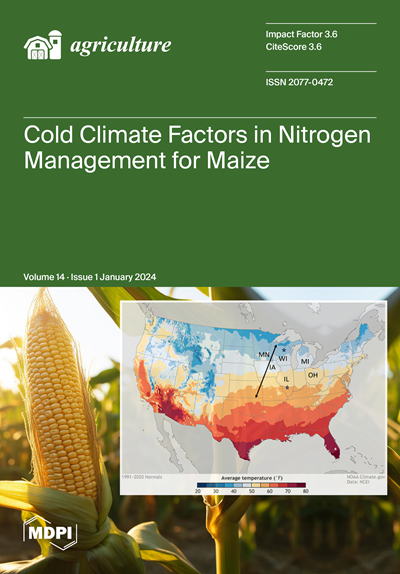欧盟养猪业结构变化与气候变化关系分析
IF 3.6
2区 农林科学
Q1 AGRONOMY
引用次数: 0
摘要
欧盟要在2050年之前实现全经济范围的气候中和,这需要在许多经济活动中进行具有挑战性的转型。本文旨在研究2010-2020年期间畜牧业重要部门——养猪业的结构变化与温室气体排放(GHGEs)的关系,并探讨减少温室气体排放的主要方向。这一贡献的学术新颖性的特点是结合了转移份额和聚类分析,允许对进化现象进行调查,应用可持续性棱镜来理解养猪业和牲畜系统之间的联系,以及结合国家和欧盟层面。结果表明,养殖数量的急剧下降和农场牲畜单位(lsu)的适度减少并没有带来切实的温室气体减排效果。聚类分析证实,除芬兰和希腊外,2004年前成员国的养猪系统与其他国家相比,猪和生猪lsu的存栏量呈现出积极的发展或较低的下降,而在2003年后占主导地位的成员国中,温室气体排放减少率更高。本研究确定了减少生猪数量、改善饲料生产和相关供应链的发展、改变粪便管理和利用是减少温室气体排放的主要方向;然而,当采用上述措施时,所确定的集群与不同的温室气体减排潜力有关。建议包括制定和支持以减少猪粪温室气体排放为重点的行动,并有助于在欧盟建立循环经济。本文章由计算机程序翻译,如有差异,请以英文原文为准。
Analysis of the Nexus between Structural and Climate Changes in EU Pig Farming
The EU’s ambition to establish economy-wide climate neutrality by 2050 requires challenging transformations in many economic activities. This paper aims to investigate the nexus of structural changes and greenhouse gas emissions (GHGEs) in an important sector of the livestock system, namely pig farming, during the period of 2010–2020 and to discuss the main directions of GHGE reduction. The academic novelty of this contribution is characterised by a combination of the shift-share and cluster analysis that allows for the investigation of the evolution phenomenon, applying the sustainability prism in order to understand the nexus between pig farming and the livestock system, as well as combining the national and EU levels. Results suggest that the steep decline in the number of holdings and a moderate reduction in livestock units (LSUs) on farms do not bring tangible GHGE reduction results. The cluster analysis confirms that pig farming systems in pre-2004 member states, except for Finland and Greece, demonstrated positive developments or a lower decline in holdings with pigs and live swine LSUs compared to other countries, while in the dominant share of post-2003 member states, the GHGE reduction rate was higher. This research identifies a reduction in the pig population, improvement in feed production and the development of related supply chains, and changes in manure management and utilisation as the main directions of GHGE reduction; however, the identified clusters are related with different potentials of GHGE reduction when applying the aforementioned measures. Recommendations include the development and support of actions that focus on GHGE reduction from swine manure and contribute to the establishment of a circular economy in the EU.
求助全文
通过发布文献求助,成功后即可免费获取论文全文。
去求助
来源期刊

Agriculture-Basel
Agricultural and Biological Sciences-Food Science
CiteScore
4.90
自引率
13.90%
发文量
1793
审稿时长
11 weeks
期刊介绍:
Agriculture (ISSN 2077-0472) is an international and cross-disciplinary scholarly and scientific open access journal on the science of cultivating the soil, growing, harvesting crops, and raising livestock. We will aim to look at production, processing, marketing and use of foods, fibers, plants and animals. The journal Agriculturewill publish reviews, regular research papers, communications and short notes, and there is no restriction on the length of the papers. Our aim is to encourage scientists to publish their experimental and theoretical research in as much detail as possible. Full experimental and/or methodical details must be provided for research articles.
 求助内容:
求助内容: 应助结果提醒方式:
应助结果提醒方式:


